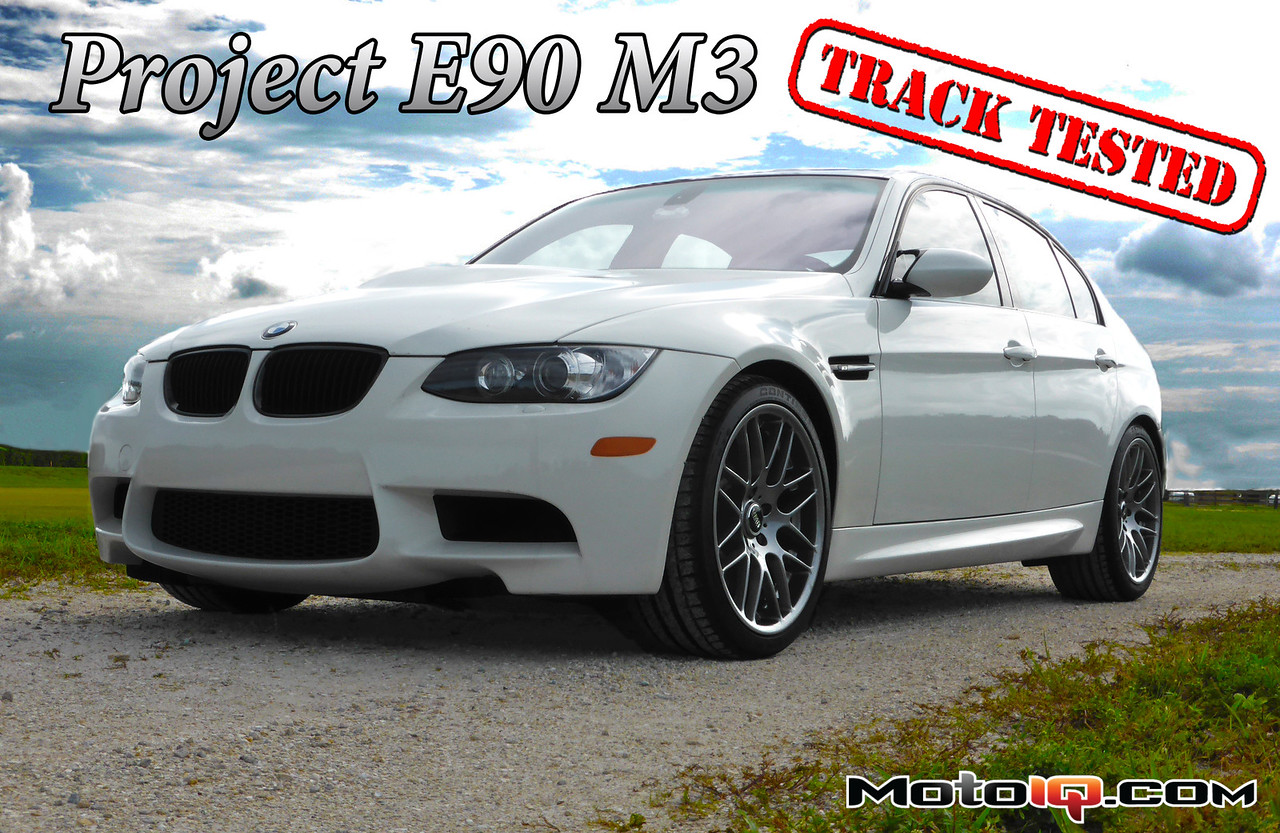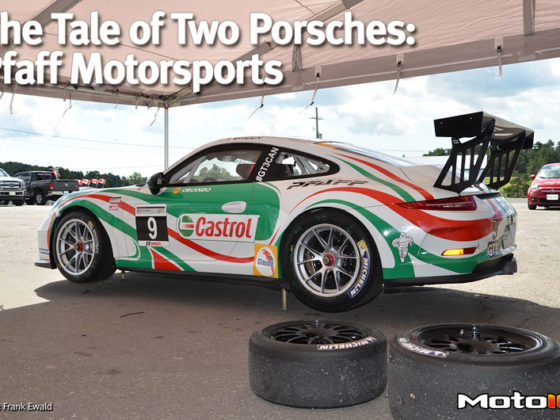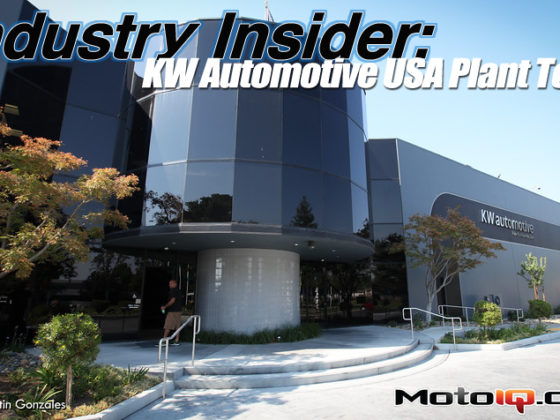 The motorsport-inspired “CSL”-style V703 gives our white E90 M3 the “CRT” style look that will continue to look good even when the car is not perfectly clean thanks to the contrasting gun-metal wheels.
The motorsport-inspired “CSL”-style V703 gives our white E90 M3 the “CRT” style look that will continue to look good even when the car is not perfectly clean thanks to the contrasting gun-metal wheels.
 With the goal of tasteful and subtle modifications, between the OEM black chrome font and side grilles, carbon rear decklid spoiler, and gunmetal V703 wheels, I think our M3 is hitting the nail on the head to continue the spirit of a 4-door M3.
With the goal of tasteful and subtle modifications, between the OEM black chrome font and side grilles, carbon rear decklid spoiler, and gunmetal V703 wheels, I think our M3 is hitting the nail on the head to continue the spirit of a 4-door M3.What would a tire test be without some hard numbers and data? Of course we can (and do) say that the Continental ExtremeContact DW is a fantastic tire. On the street it’s comfortable, quiet, and soaks up harsh bumps and expansion joints in the road with ease. With tens of thousands of miles of experience on this tire, it has great durability and is superb in both the dry and wet. Even though we subjectively like the tire, we had to take it to the track to showcase the true dry performance of the tire.
We headed over to Palm Beach International Raceway in South Florida to turn a few laps and see how our setup performed. Now keep in mind that the E90 M3 is not a great track car in stock form. At ~3,700lbs+ the V8 powered car is the heaviest M3 of all time and has single-piston sliding calipers that require aggressive pads to survive track use. In addition, the car is severely under-tired for its weight with 245/265 width tires that are not wide enough to hold up to serious track use. To make the M3 more trackable, it’s common practice to run race compound brake pads, a 275 square or 275/295 staggered tire setup which greatly increases the tire volume, and to remove the rear seats and replace the heavy 10-way adjustable electric seats with racing buckets to shave off a few hundred pounds. Since this is a daily driver, we are not optimizing the car for track use.
A heavy car on small tires isn’t the best formula for a track car or a favorable tire test. To make matters worse, the weather conditions were not ideal on a hot July summers day which was approaching 100*F. Despite all of this, the tires performed better than we expected:
 Looking at the longitudinal Gs (in orange), our M3 pulled -0.93 Gs under braking on stock brake pads. After a few hard brake zones the OEM pads quickly overheated, faded, and could not sustain the grip the tires were capable of. With more aggressive pads, it’s likely the longitudinal Gs would have been even higher.
Looking at the longitudinal Gs (in orange), our M3 pulled -0.93 Gs under braking on stock brake pads. After a few hard brake zones the OEM pads quickly overheated, faded, and could not sustain the grip the tires were capable of. With more aggressive pads, it’s likely the longitudinal Gs would have been even higher. In cornering, the ExtremeContact DW sustained an impressive 0.98 lateral Gs (in Blue) under poor conditions on a hot summer day in South Florida. This is higher than the 0.93 Gs that Edmunds recorded a 2008 E90 M3 sedan at and higher than the 0.95 G’s for the E92 M3 coupe (which was the same as MotorTrend’s 2011 Test) which were equipped with ContiSport Contact 3 tires.
In cornering, the ExtremeContact DW sustained an impressive 0.98 lateral Gs (in Blue) under poor conditions on a hot summer day in South Florida. This is higher than the 0.93 Gs that Edmunds recorded a 2008 E90 M3 sedan at and higher than the 0.95 G’s for the E92 M3 coupe (which was the same as MotorTrend’s 2011 Test) which were equipped with ContiSport Contact 3 tires. Here is an entire lap around Palm Beach International Raceway. Our bone stock M3 (337whp) on the Continental ExtremeContact DW tires turned a very respectable lap time of 1:34.80. We reinstalled the cats and removed the tune to benchmark the car with stock power levels to compare it to other projects in the future as well as when we return again with even more power.
Here is an entire lap around Palm Beach International Raceway. Our bone stock M3 (337whp) on the Continental ExtremeContact DW tires turned a very respectable lap time of 1:34.80. We reinstalled the cats and removed the tune to benchmark the car with stock power levels to compare it to other projects in the future as well as when we return again with even more power. On track, BMWs tend to have a characteristic “entry push, exit oversteer” balance to them. The 11mm wider front track width allowed the car to be neutral in trail-braking and reduced the off-throttle entry understeer. Corner exit required unwinding the steering wheel to minimize the normal BMW tendency for effortless oversteer. Turn-in response was good and the tires built up lateral load predictably without feeling vague or ‘mushy’. Tread squirm was minimal and a fraction of other tires with similar grooves and tread design while peak grip is shown graphically above and was outstanding. The new wheels and spacers ended up around 5lbs heavier per corner than stock and under 2lbs heavier than the OEM ZCP package. While this is not ideal, the additional width of the front end and improved balance overshadowed the unsprung weight difference and for less than half the price of the OEM wheels, it’s a heck of a bargain.
Overall we are very pleased with the visual improvement of the VMR V703 wheels, Turner Motorsport 20mm wheel spacers, and the continued performance of the Continental ExtremeContact DW tires. To pull the G’s and lap times the car did on stock power levels, it’s hard to argue with the performance and trackability of this wheel and tire combination.
SOURCES:




